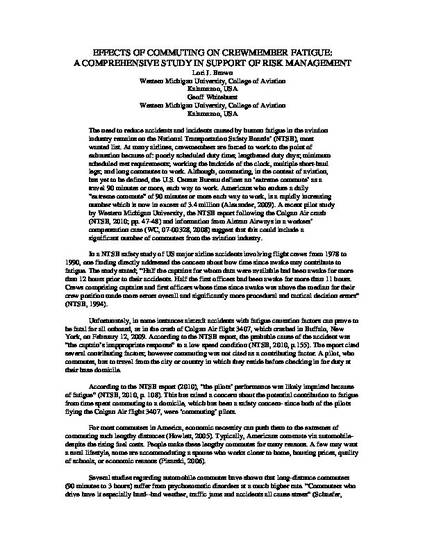
The need to reduce accidents and incidents caused by human fatigue in the aviation industry remains on the National Transportation Safety Boards’ (NTSB), most wanted list. At many airlines, crewmembers are forced to work to the point of exhaustion because of: poorly scheduled duty time; lengthened duty days; minimum scheduled rest requirements; working the backside of the clock, multiple short-haul legs; and long commutes to work. Although, commuting, in the context of aviation, has yet to be defined, the U.S. Census Bureau defines an ‘extreme commute’ as a travel 90 minutes or more, each way to work. Americans who endure a daily "extreme commute" of 90 minutes or more each way to work, is a rapidly increasing number which is now in excess of 3.4 million (Alexander, 2009). A recent pilot study by Western Michigan University, the NTSB report following the Colgan Air crash (NTSB, 2010; pp. 47-48) and information from Airtran Airways in a workers’ compensation case (WC, 07-00328, 2008) suggest that this could include a significant number of commuters from the aviation industry.
Available at: http://works.bepress.com/lori_brown/26/
